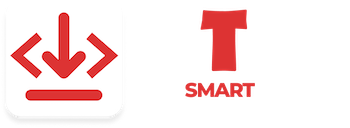Introduction to STM32 – 32-bit ARM-Based Microcontroller
32-bit Microcontrollers are rolling the world, Now is the time to start moving from 8-bit low speed to the giant ARM
What you’ll learn
Introduction to STM32 – 32-bit ARM-Based Microcontroller
-
Things you must know about Embedded Systems, STM32, and ARM
-
Program STM32 Effectively
-
ARM Architecture
-
Create a fully functional Project in no Time
-
STMicroelectronics and the STM32 platform
-
The World of STM32
-
STM32 Key Features
-
STM32 Applications
-
Provide an overview of the STM32 MCU family.
-
The NUCLEO-L476RG Development
-
STM32 Development Board
-
ARM Cortex M-4 Architecture
-
ARM Cortex M-4 Memory Maps
-
Development Board
-
Cortex Overview
-
CMSIS
-
Low Power Operation
-
Safety Features
-
The Flash Module
-
Application Examples
-
Practical Walkthrough showing the famous STM32 Development Board
-
Download and Install STM32CubeMX Development Environment
-
Download and Install Arduino and Configure it for STM32 Microcontroller
-
How to Write your first code
-
Boot loader and how to upload it to STM32 Board
-
Uploading your first code to STM32 Board
-
Blink an LED
-
Code Structure explained
-
Advance coding examples
Requirements
-
Basic Knowledge of Programming
Description
>>>
32-bit Microcontrollers are rolling the world, Now is the time to start moving from 8-bit low speed to the giant ARM
<<<
Welcome to this course.
In this in-depth course, you will learn how to develop embedded firmware for STM32 Cortex-M 32-bit microcontrollers using various development tools.
The STM32 series are some of the most popular microcontrollers used in a wide variety of products. They also have an excellent support base from multiple microcontroller development forums.
This family of microcontrollers from STMicroelectronics is based on the ARM Cortex-M 32-bit processor core.
STM32 microcontrollers offer a large number of serial and parallel communication peripherals which can be interfaced with all kinds of electronic components including sensors, displays, cameras, motors, etc. All STM32 variants come with internal Flash memory and RAM.
STM32 can be used in your
Engineering projects,
Industrial Projects,
or
Home Automation
related projects.
Why you should Learn How to Program STM32?
It’s based on a 32-bit ARM that cheaper and has more processing power than an 8-bit Microcontroller like PIC, 8051 uC. ARM cortex series are used widely in embedded systems. ARM also supports features such as low power mode, thumb instructions set, sometimes coupled with real-time co-processors, and good software library support.
STM32 series have some good options that can make them a good candidate for a project :
-
Hardware compatibility with other MCU of different series. For example, you can design a PCB that works both with an MCU from the STM32F4xx line and STM32L4xx.
The migration between different MCUs is documented.
- Ease of PCB routing, pins of same port/functionality are close together.
- A good set of peripherals.
- STM32L! when power consumption and CPU power are needed at the same time, ST wins the battle.
Who this course is for:
- Anyone looking to improve his embedded systems skills is moving from 8-bit Microcontrollers to 32-bit Microcontrollers
- Anyone looking to learn ARM and RISC Based Microcontrollers
- STM32 Geeks
- Engineering Students – Electronics, Electrical & Computer Science
- High School Science Students
- Electronic Geeks, Hobbyist & Art Students
- Embedded Systems Geeks
- Anyone interested in learning ARM architecture with a low budget STM32 solution
-
Last updated 5/2021
Content From: https://www.udemy.com/course/stm32-introduction-to-stm32-stm-electronics/
If the links does not work, contact us we will fix them
Get More Courses
FreeCourseSite











Add Comment